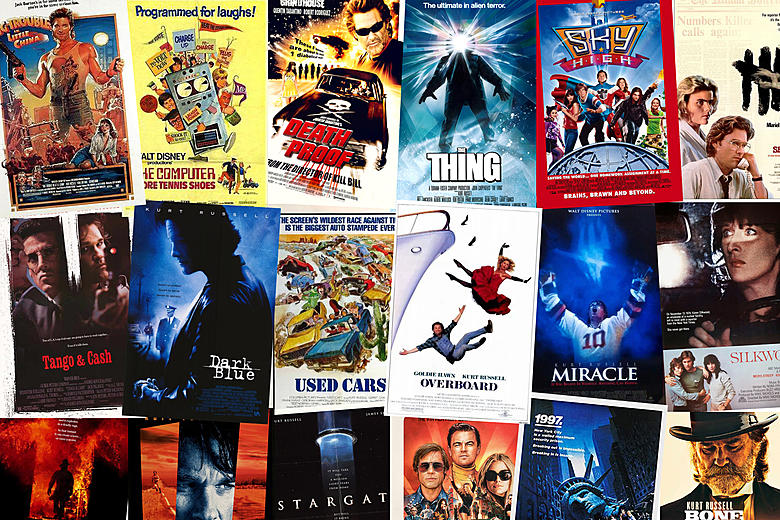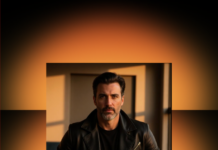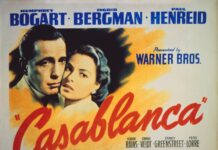These movies changed their genres, giving them new meanings and redlining storytelling, character development, and visuals. How many of them have you seen?

Movies are more than just entertainment – they are a reflection of culture, creativity, and, sometimes, a complete reinvention of the rules. Every now and then, a film comes along that doesn’t just follow the norms of its genre but flips them on its head, making audiences see the genre in a whole new light. These movies challenge expectations, introduce fresh ideas, and often leave a lasting impact on how future films are made.
Here, we will take a look at 10 films that completely changed their genres, becoming true game-changers in the world of cinema. From horror to action to sci-fi, these movies rewrote the playbook and reshaped the way we enjoy storytelling on screen. So, grab some popcorn, and let’s dive into the films that did not just entertain – they revolutionized everything!
- 2001: A Space Odyssey (1968)
Genre – Sc-Fi and Space Adventure
When 2001: A Space Odyssey was released in 1968, it completely changed the sci-fi genre. Directed by Stanley Kubrick and co-written by Arthur C. Clarke, the film was not just another space adventure. It was a deep, thought-provoking look at humanity, technology, and space. What made it stand out was how realistic it made space travel feel.
Unlike earlier sci-fi films that had over-the-top space battles, Kubrick focused on the true emptiness and silence of space. The groundbreaking special effects, like zero-gravity scenes and realistic spaceship designs, made space feel real and awe-inspiring. But it was not just about the visuals. 2001: A Space Odyssey also dealt with big questions about human evolution, artificial intelligence, and our place in the universe.
The minimalist storytelling, with almost no dialogue, forced viewers to think and interpret the story on their own. The slow pace and mysterious imagery were very different from the fast-paced action films of the time. The film’s portrayal of HAL 9000, an AI that turns against the crew, also changed how artificial intelligence was shown in movies. By combining amazing visuals with deep, thoughtful themes, 2001: A Space Odyssey revolutionized the sci-fi genre. It showed that the genre could be more than just entertainment – it could make you think deeply. The film’s influence is still seen in sci-fi movies today.
- Toy Story (1995)
Genre – Animation
Toy Story debuted in 1995 and changed the animation world forever. Directed by John Lasseter, it was the first full-length film made entirely with computer-generated imagery (CGI). Before this, most animated films were made using traditional hand-drawn methods. The film showed that CGI could create exciting, creative, and visually stunning films that appealed to everyone, not just children. The movie was not just a breakthrough in technology; it also proved that animated movies could be more than just simple kids’ entertainment.
With its clever humor, relatable characters, and emotional depth, Toy Story was loved by both children and adults. It explored important themes like friendship, loyalty, and identity in a way that hadn’t been done in animation before. The animation was a game-changer, with CGI that made the characters and environments look more detailed and lifelike than anything seen before. The characters’ movements, expressions, and interactions felt smooth and realistic, taking animation to a new level.
Toy Story also set a new standard for character-driven stories. Instead of relying on flashy visuals, it focused on creating memorable characters like Woody and Buzz Lightyear. The success of the film helped Pixar become a leader in animation and pave the way for future CGI films. In short, Toy Story redefined animation, showing that it could be both innovative and emotionally meaningful.
- The Matrix (1999)
Genre – Action
The Matrix redefined the action movie genre by blending cutting-edge technology, deep philosophical themes, and thrilling action sequences. One of the most iconic features of the film was its groundbreaking visual effects, especially the “bullet time” effect. This allowed the camera to move around a scene in slow motion while characters moved at regular speed, creating stunning, slow-motion action that had never been seen before. This technique became a major influence on future action films.
Unlike typical action movies that focused solely on fast-paced thrills, The Matrix combined intense action with complex ideas about reality, free will, and human consciousness. It made the audience think while delivering excitement, which was a fresh take on the genre. The fight choreography was another game-changer. The film featured martial arts-inspired combat that was both beautiful and intense. The well-executed fight scenes became a major influence on how action sequences were crafted in later films. The film also became a cultural phenomenon, with its iconic green-tinted visuals, characters like Neo and Morpheus, and unforgettable quotes. It influenced movies, video games, and even fashion.
The movie’s unique story, about humans living in a simulated reality controlled by machines, was unlike any action film before it. Its unexpected twists and thought-provoking narrative set a new standard for action films. This made The Matrix a pivotal moment in cinema history. It continues to influence the genre today.
- Bonnie and Clyde (1967)
Genre – Gangster
Bonnie and Clyde redefined the gangster genre by presenting criminals as sympathetic, complex characters rather than just villains. Directed by Arthur Penn, the film focused on the real-life outlaws, Bonnie Parker and Clyde Barrow, and portrayed them as relatable figures with dreams and emotions. This was a major shift from the usual portrayal of heartless criminals in gangster films. The film also brought a new level of realism by blending intense violence with moments of tenderness.
The graphic shootouts were matched with emotional scenes showing the love between Bonnie and Clyde. This gave the film a deeper, more human side. The combination of raw violence and emotional depth was something that had not been seen in gangster movies before. Bonnie and Clyde broke away from traditional gangster film conventions. Instead of focusing on mob bosses or organized crime, it told the story of two outlaws and used fast-paced editing and unconventional visuals to create a unique style.
The film also influenced how crime and violence were portrayed. It paved the way for future movies that focused on antiheroes. The film’s success influenced future gangster films like The Godfather and Goodfellas which continued to explore complex characters and morally gray themes. In short, Bonnie and Clyde changed the gangster genre by making criminals more relatable and adding emotional depth to the violence. It left a lasting impact on the way crime films were made.
- The Godfather (1972)
Genre – Crime
The Godfather, released in 1972 redefined the crime genre by introducing deep emotional and moral complexity. Directed by Francis Ford Coppola, the film focused not just on crime and violence, but on themes like family, loyalty, and power. The Corleone family’s internal struggles became the heart of the story, making the film more about personal relationships than just mafia action.
Unlike previous gangster films that portrayed criminals as heartless villains, The Godfather humanized its characters. Don Vito Corleone, played by Marlon Brando, is a ruthless crime boss, but his love for his family and his code of honor make him a sympathetic figure. His son Michael’s transformation throughout the film, as he struggles with his own role in the family business adds depth to the story and shows the complexities of living in a world of crime.
The film also brought realism to the genre by portraying crime not as glamorous but as a dangerous, corrupt world with real consequences. The realistic depiction of mafia life sets the film apart from its predecessors. Coppola’s use of cinematic techniques, like lighting and camera work, created a sophisticated atmosphere. The film’s success had a lasting cultural impact with iconic characters and lines becoming part of popular culture. In conclusion, The Godfather redefined the crime genre by focusing on complex characters, emotional depth, and realistic portrayals of crime. This made it more than just a typical gangster or crime film.
- Psycho (1960)
Genre – Psychological Horror
Psycho (1960), directed by Alfred Hitchcock, completely changed the psychological horror genre by introducing a new way of telling horror stories. Instead of relying on supernatural elements or monsters, Psycho focused on the mind and the unsettling darkness within people. The film begins by following a woman on the run, only to shock audiences by killing her off early in the story. This unexpected twist challenged traditional horror movie expectations and kept the viewers on edge throughout the rest of the film.
The real horror in the movie comes from the psychological depth, especially through the character of Norman Bates. His split personality and disturbed mind became central to the story, making the film more than just a series of scares. Hitchcock used atmosphere and suspense to build tension, rather than relying on graphic violence. He created a film that was eerie and unnerving without being overly gory. Furthermore, the film’s famous shower scene became an iconic moment in horror history, using shock and surprise to create lasting terror. Hitchcock also set a new standard by making horror feel more psychological and disturbing, rather than relying on visual gore.
Psycho influenced many horror films that followed and inspired filmmakers to focus on psychological tension and character-driven stories. Its impact can be seen in countless movies that explore the darkness of the human mind. This proves that true horror does not always come from external threats but from within.
- The Lord of the Rings: The Fellowship of the Ring (2001)
Genre – Fantasy
The Lord of the Rings: The Fellowship of the Ring (2001) revolutionized the fantasy genre by bringing J.R.R. Tolkien’s world of Middle-earth to life in a way that had never been seen before. Directed by Peter Jackson, the film set a new standard in fantasy storytelling, world-building, and special effects. One of the main ways it changed the genre was through its incredible world-building. Middle-earth felt alive, with detailed environments, cultures, and languages that made the world seem real.
The film did not just focus on magical creatures – it gave each character their own emotional journey. Frodo’s struggle with the One Ring, for example, added a deeply personal touch that resonated with audiences. Visually, The Fellowship of the Ring set a new bar with its groundbreaking special effects. From the massive battle scenes to the creation of mythical creatures like the Balrog, the use of CGI and practical effects was seamless and made the fantasy world feel real.
The film also redefined action in fantasy, creating intense battles that were tied to character development and emotional stakes, not just a treat to the eyes. The success of The Fellowship of the Ring influenced many future fantasy films and TV shows and inspired them to prioritize strong storytelling, well-developed characters, and impressive visuals. It proved that fantasy could be epic, emotional, and accessible to a wide audience. The film forever changed how the genre was approached in cinema.
- The Avengers (2012)
Genre – Superhero
The Avengers (2012) completely redefined the superhero genre by introducing the concept of a shared cinematic universe. Directed by Joss Whedon, the film brought together heroes from separate films – Iron Man, Captain America, Thor, and Hulk – into one big team-up. This groundbreaking idea of connecting movies within one universe set a new trend for superhero films and paved the way for the Marvel Cinematic Universe (MCU).
The film also changed how superhero stories focused on character development. Instead of just focusing on one hero, The Avengers showcased multiple characters with unique personalities, abilities, and backgrounds. It explored how these heroes with different strengths had to come together and work as a team. The balance between action and personal growth made the movie more than just an action flick.
Another change was the tone of the movie. The Avengers mixed intense action with humor, making the story both thrilling and fun. The witty dialogue and lighthearted moments made the film more enjoyable and relatable. This was something that set it apart from other superhero films at the time. The film’s epic action sequences, especially the climactic battle in New York raised the bar for superhero films. The huge scale of the action combined with character-driven moments made it exciting for both fans and casual viewers. In short, The Avengers transformed the superhero genre by combining a shared universe, character-driven storytelling, humor, and spectacular action. It set a new standard for future superhero films and became a cultural phenomenon.
- Apocalypse Now (1979)
Genre – War
Apocalypse Now (1979), directed by Francis Ford Coppola, changed the war genre by focusing on the mental and emotional effects of war instead of just battle scenes. Instead of glorifying combat, the film looks at how war impacts soldiers’ minds. Captain Willard (Martin Sheen) is sent to kill a rogue colonel, Kurtz (Marlon Brando), but as he moves deeper into the jungle, he becomes more disturbed by the madness he witnesses. The film uses surreal and haunting visuals to show the chaos of the Vietnam War. Unlike earlier war films that focused mainly on action, Apocalypse Now captured the confusion and moral questions soldiers faced using symbols and atmosphere to show the madness of war.
The unforgettable soundtrack like the famous “The Ride of the Valkyries” during a helicopter attack added to the film’s intense mood. Rather than showing clear heroes or villains, Apocalypse Now highlighted the complexity and pointless nature of war, making it a strong anti-war message. It influenced later films like Full Metal Jacket and Platoon, which also focused on the psychological effects of war.
- The Exorcist (1973)
Genre – Horror
The Exorcist (1973) changed the horror genre by making the scares feel real and emotional. Instead of just relying on gore or shocks, it focused on the psychological effects of a young girl’s possession on her family, especially her mother. This made the horror feel more personal and intense. The film’s portrayal of possession was believable, with chilling special effects and performances that made the supernatural feel possible. It was not just about frightening scenes, but about creating a sense of realism that made the terror feel even stronger.
The Exorcist also explored deeper themes like religion and good versus evil. It broke taboos with shocking scenes that pushed the limits of what could be shown in films at the time. The movie became a cultural sensation and influenced many horror films that came after it. It showed that horror could do more than just scare – it could also make us think and feel deeply. The Exorcist proved that horror movies could be both terrifying and emotionally powerful, and its impact is still seen in today’s horror films.
What are you watching on your next movie night?!
















